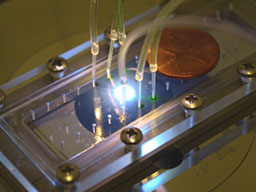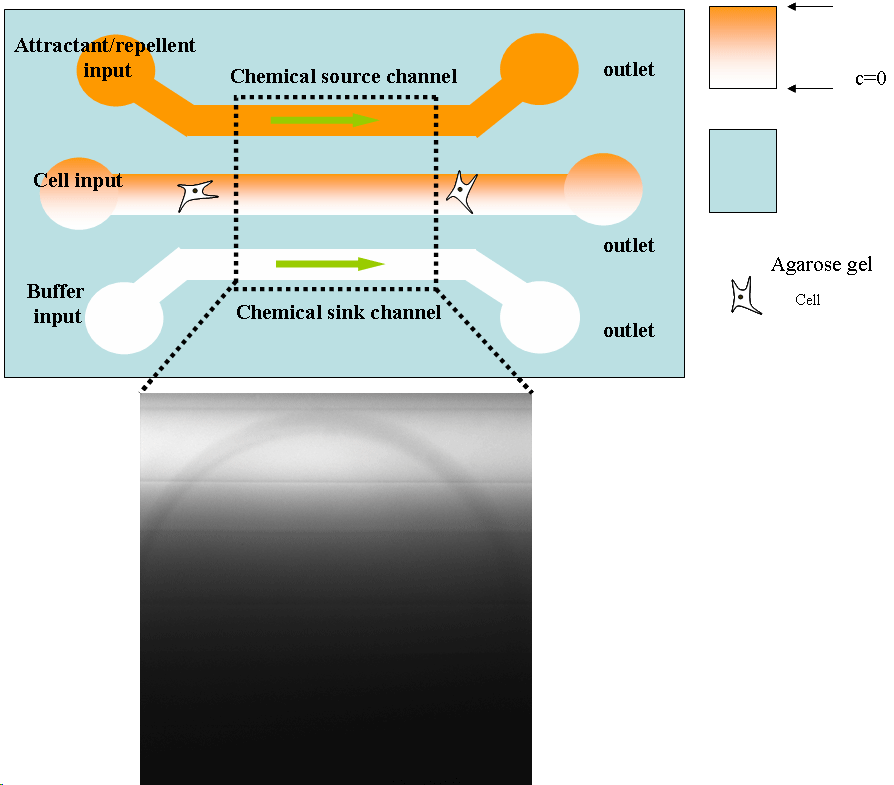A Hydrogel-based microfluidic device for the studies of bacterial and mammalian cell migration

We have developed a hydrogel-based three-channel microfluidic device that is capable of generating a stable linear concentration gradient for the study of both bacterial and mammalian cell chemotaxis.

Three parallel microfluidic channels are patterned on a 1mm thick agarose gel membrane. The linear chemical gradient is established in the center channel via diffusion.
The device advances the current state- of -the-art in microchemotaxis device
- the linear chemical gradient in the channel where cells reside is established without through flow, thus the movement of the cells in the channel is caused primarily by the cells chemotactic response and not by variations in fluid flow
- the device is easy to prepare and implement and is made with agarose, a commonly used, biocompatible, and inexpensive hydrogel
- establishment of competing chemical gradient in the center channel.
For more information please see the following paper:
Jin Pian Diao, Sue Kim, Elizabeth Fogarty, Mingming Wu, Lincoln Young, Peng Zhou, Mike Shuler, and Matthew P. DeLisa , A three-channel microfluidic device for generating static linear gradients and its applications in the quantitative analysis of bacterial chemotaxis, Lab on a chip, 6, 381 (2006).
Site created and maintained by Young Joon Suh

